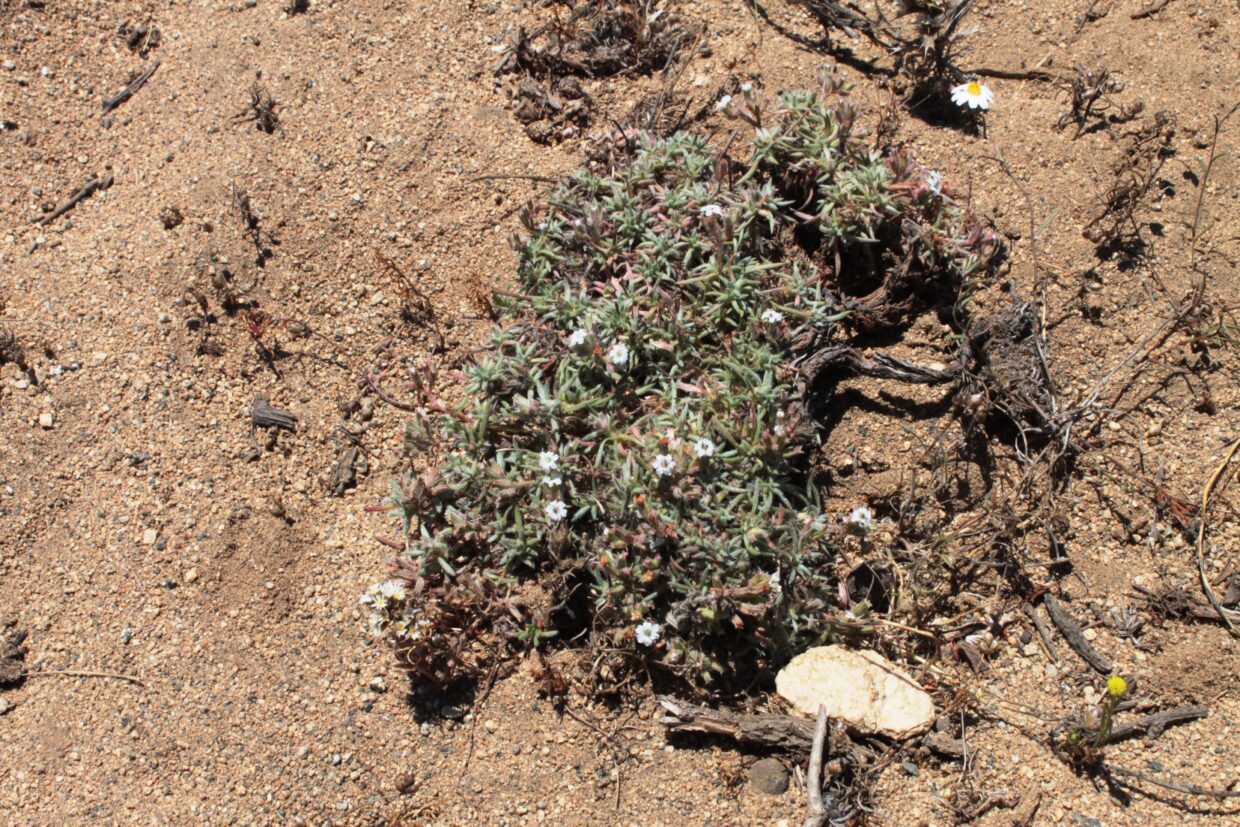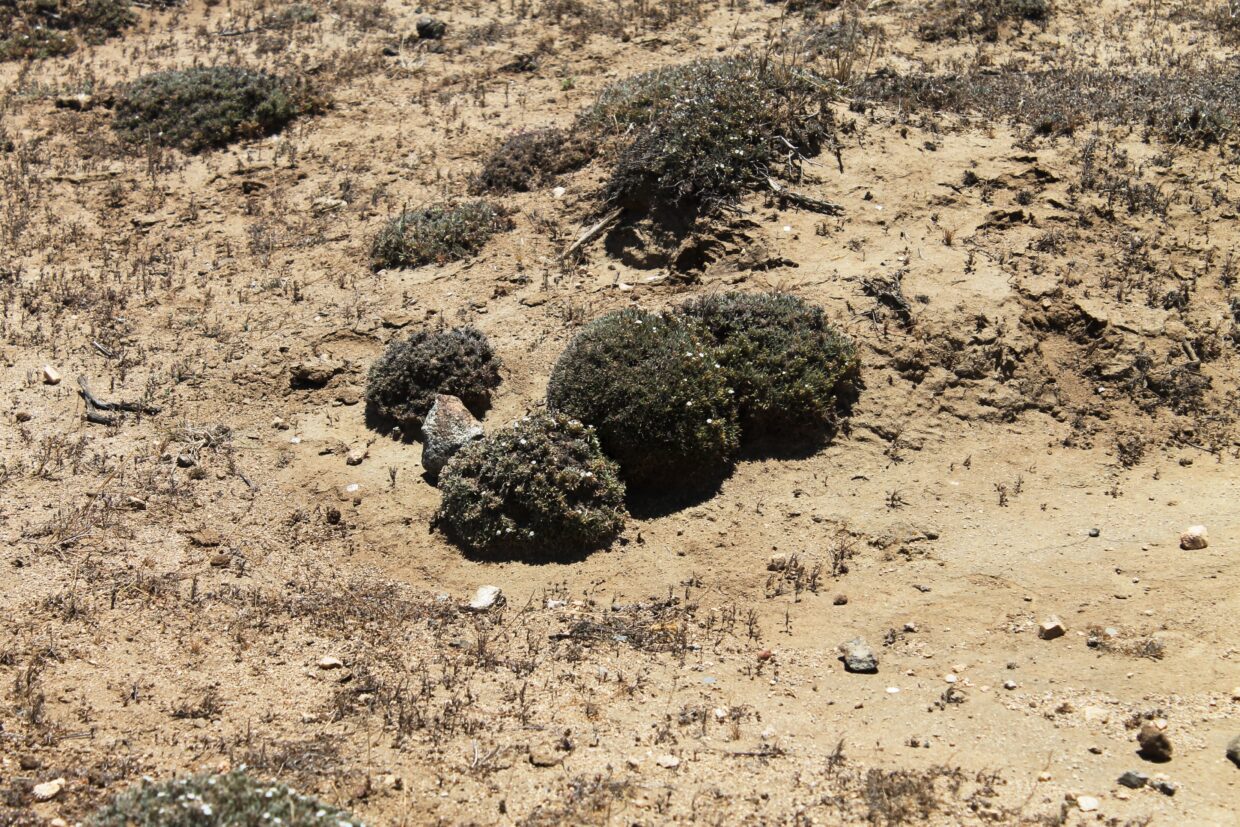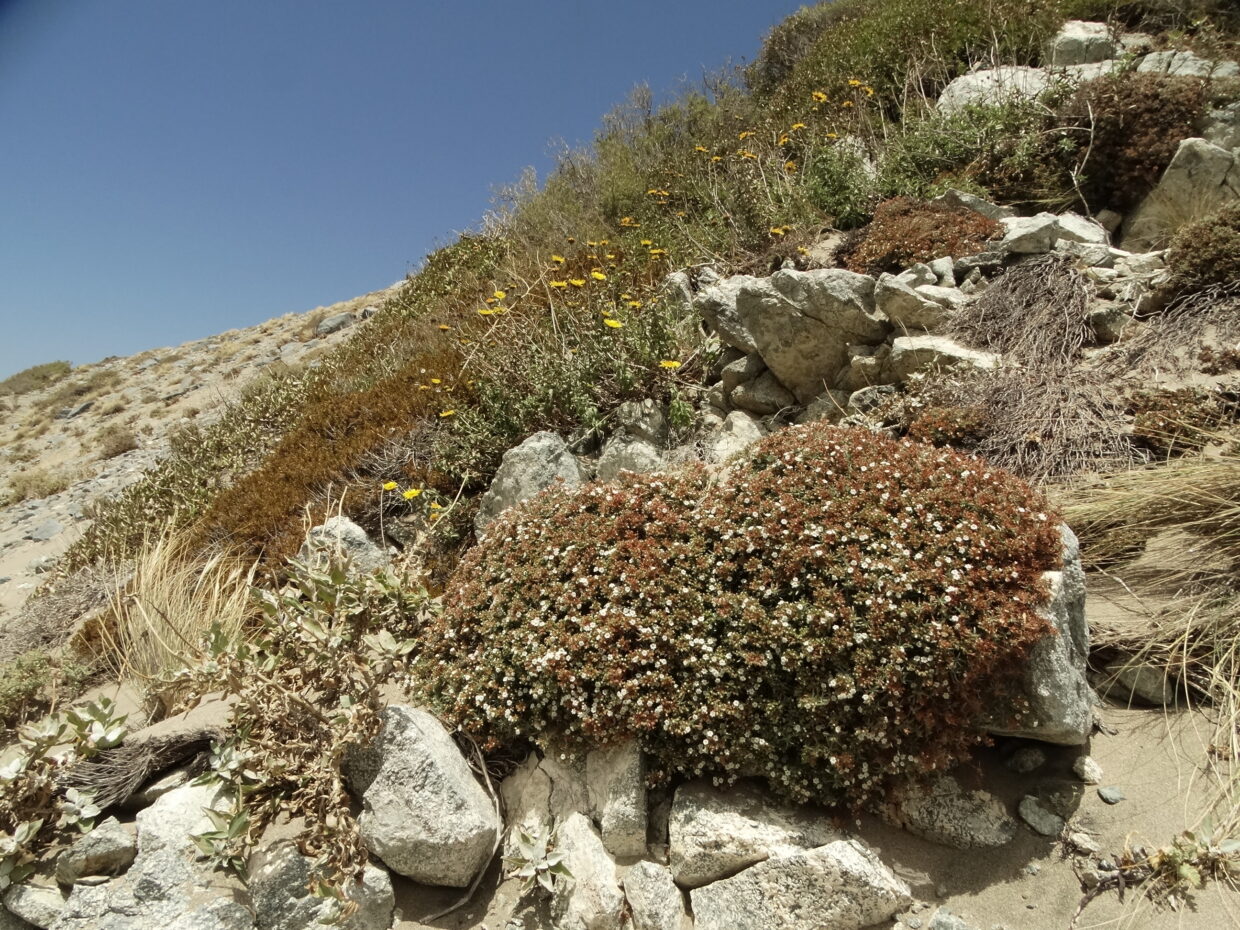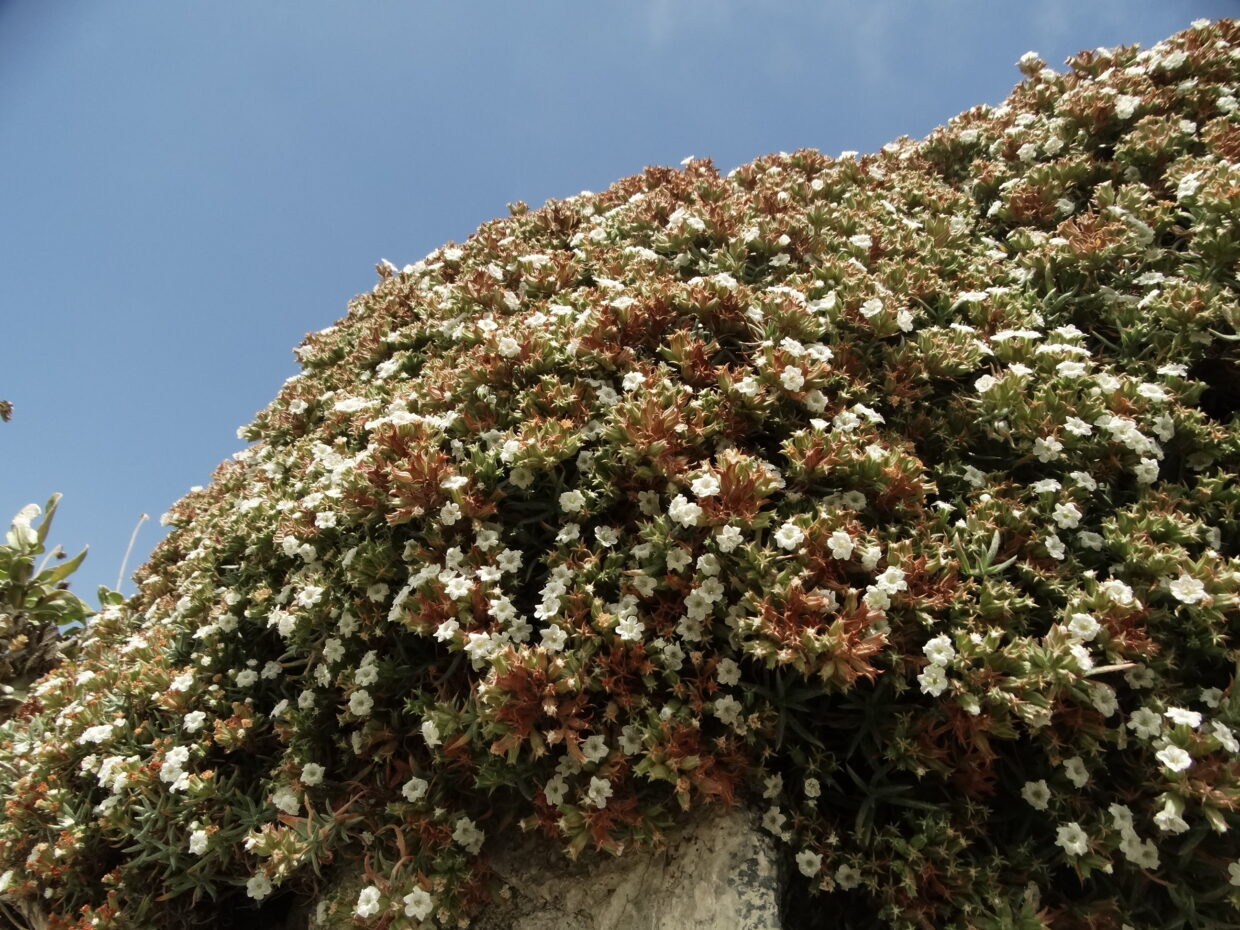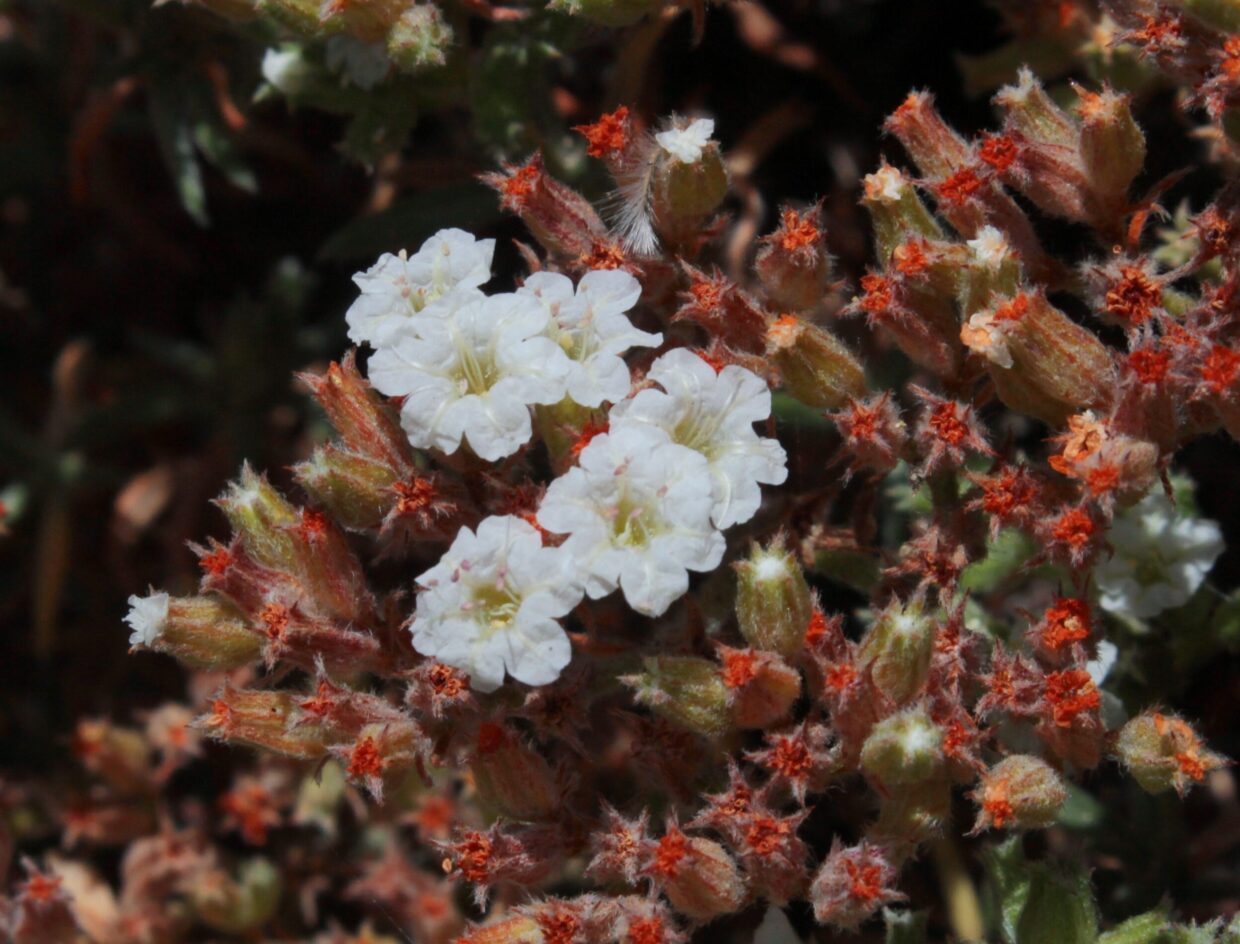Lugar de publicación
Gayana Bot. 79(1): 44 (2019)
Cita del ejemplar Tipo
Chile, Región de Coquimbo, prov. Limarí, camino a la desembocadura del Río Limarí, 30°47’22.04”S-71°37’47.97”O, 230 m s.n.m., 15-XI-2016, S. Teillier, J. Macaya, P. Novoa & O. Fernández 8188 (holotipo, CONC; isotipos SGO, JBN).
Referencias
-
Teillier & Macaya-Berti (2018)
Teillier, S. y Macaya-Berti , J. 2018. Cinco Nuevas Especies de Chorizanthe (Polygonaceae—Eriogonoideae) del Norte de Chile. Novon 26(1):37-52
Iconografía
- Teillier et al (2019): Figs. 8, 9
Regiones
Distribución y habitat
Se encuentra en las zonas costeras desde el Parque Nacional Fray Jorge hasta la Caleta Manso en Provice Limarí. Tiene un rango altitudinal de entre 10-500 metros sobre el nivel del mar. (Teillier et al., 2019)
Descripciones
- Teillier et al (2019)
Hábito
Subarbustos, densa o laxamente pulvinados, tallos aéreos leñosos
Características claves para su identificación
Especie afín a C. vaginata, que crece en las dunas de más al sur del país. Se diferencia, principalmente, por la forma de las hojas, lineares en esta especie y romboidales hasta lanceoladas en C. vaginata (Teillier et al. (2019))
Notas
C. limariensis is a complex species due to its great variation in habit; usually forms squat cushions with the leaves in very tight rosettes, with the flowers in a terminal inflorescence, however, some specimens can be more lax with long lateral flowering stems. This typical cushion-like habit can be seen on the way to the mouth of the Limarí river; at the mouth itself, more loosely branched specimens were observed but with the prostrate stems. Another "form" is the population at Caleta Sierra, where the leaves are glabrous.





